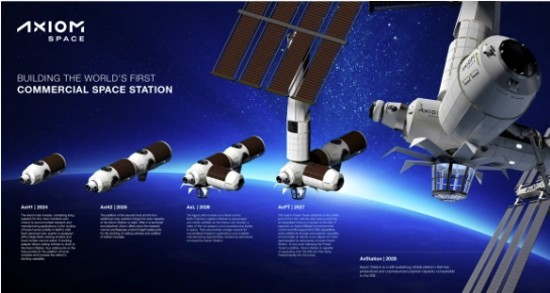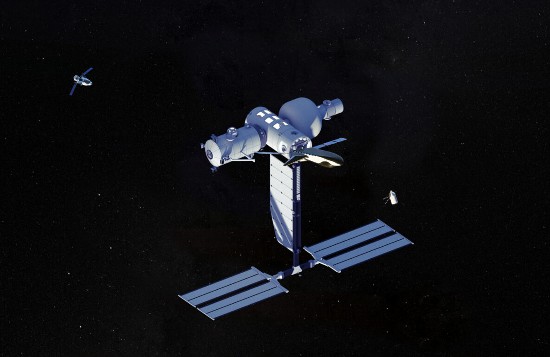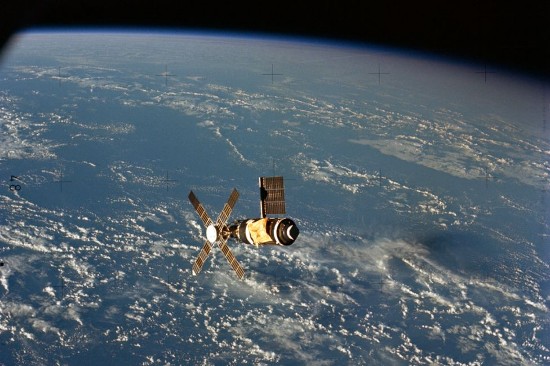The International Space Station (ISS) and Tiangong are the two human outposts circling the Earth today. But if all of the commercial and national space station aspirants meet their goals, Low-Earth Orbit (LEO) will see several new players joining these beginning as early as 2025 and going into the 2030s.
NASA is currently working with Axiom (designers of the new Artemis space suit), the developer of the Axiom Orbital Segment which is scheduled for launch in 2025 to be attached to the ISS to provide an onboard commercial working environment. Other NASA-supported ventures include those being built by Blue Origin, Nanoracks, and Northrop Grumman. Joining these four is Vast which recently signed a contract with SpaceX to put its station into orbit by 2025.
The non-commercial players in LEO space include the on-and-off-again Russian plans for a waystation independent from ISS, and India’s ISRO with its plans to put a station into LEO by 2030.
So in this first part of a multi-part series, we look at the current commercial frontrunners and their status in the LEO space race.
Axiom is Already A Going Concern

Axiom Space is well on its way to being the first commercial space station operator. NASA and Thales Alenia Space are partners with the latter responsible for building the first space module’s primary structure. The plan is to attach it to the ISS, and later separate from it to become a go-it-alone going concern. The current section of the future space station is scheduled for completion and launch using a SpaceX Falcon 9, sometime in 2025. It is an egg-like structure with large viewing ports and comfortable accommodations for its occupants.
Axiom has already flown one private mission using a SpaceX Dragon to the ISS. A second one will be launched this month and a third private mission is already planned. Axiom has also designed the spacesuits to be worn by NASA’s Artemis astronauts for their lunar missions.
So what are Axiom’s plans beyond the first module mating with the ISS? Multiple modules in the future will be sent to join the one slated for launch in 2025. These will piggyback onto ISSand sometime before the end of its life separate to become a standalone commercial station and a destination for future NASA and commercial space voyagers.
Impediments to its future success are few. Once the first module proves itself, subsequent station sections will be mass-produced. Even before 2030, the Axiom Space Station should be operational and ready to host people, become a space manufacturing hub, and support research by private companies and governments in many fields.
Blue Origin and Orbital Reef

This Jeff Bezos company, whose New Shepard suborbital rocket launcher crashed in September 2022, has yet to fly again. Before the accident, the New Shepard was, other than the SpaceX Falcon 9, the only reusable commercial rocket being flown regularly. The crash during a science and research suborbital mission had no crew onboard and the capsule was able to successfully land.
Getting from the New Shepard to the far more ambitious program that is Orbital Reef will be a significant task. Blue Origin does not intend to do this alone. It is partnering with Sierra Space, Boeing, Arizona State University, Genesis Engineering Solutions, Amazon Web Services and Supply Chain, and Redwire Space to create what it describes as the first open-system architectured space station to circle the Earth. NASA has announced its plans to use Orbital Reef as a destination for its astronauts after the ISS is de-orbited sometime around 2030. Orbital Reef is expected to be fully deployed before that milestone.
Orbital Reef is a mixed-use environment for both commercial and non-commercial visitors. Sierra Space’s Dream Chaser and Boeing’s Starliner will serve as space taxis to deliver passengers and materials to and from Earth. The Blue Origin New Glenn which has yet to be flown will be the primary launch vehicle to deliver the pieces that will eventually become the Orbital Reef.
A recently-launched Reef Challenge announced four winners in December 2022 who plan to build and test breakthrough in-space solutions onboard as the first commercial tenants. The companies include Prometheus Life Technologies with its plans to do large-scale production of human tissue in microgravity to support new pharmaceutical development and regenerative medicine; Lunasonde which will operate technology to map the ionosphere to improve atmospheric and space weather predictions; Ecoatoms with its plans to batch-manufacture biosensors onboard to do life science development on Earth and in LEO; and Fluix Inc, who will use the space environment to build nano-suspension cooling technology for data centres on Earth and in space.
The promise to meet the 2030 data needs a lot of moving parts to come together. Starliner has yet to prove it is as capable as the SpaceX-Dragon system in providing a space-taxi service to the ISS. That certification should happen sometime this year. The Dream Chaser cargo space plane has seen its development timeline slip to the last quarter of this year. A crew version is years behind the cargo version’s first launch. And New Glenn has yet to fly which may happen sometime in 2024.
In Part 2 we look at the plans for space stations from Nanoracks, Northrop Grumman and Vast, this new upstart that promises with the help of SpaceX to beat the others by being first to deploy as early as 2025.










[…] have previously written about Axiom Space in partnership with Thales Alenia. It has always claimed that it will be the first commercial space […]